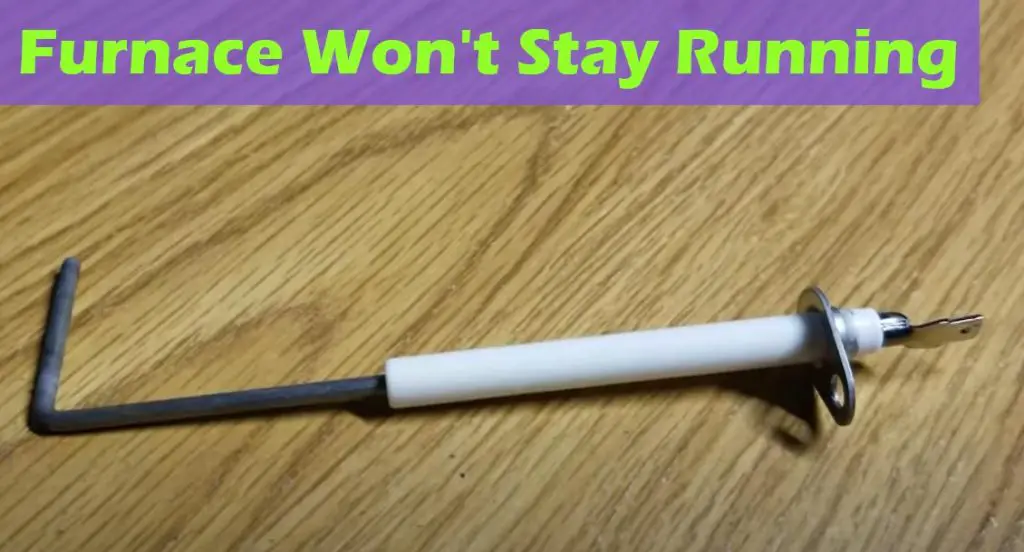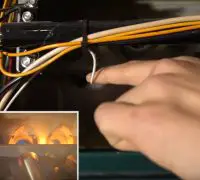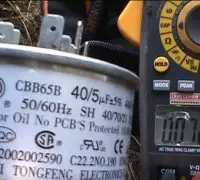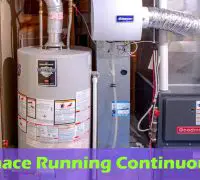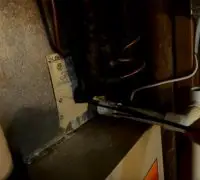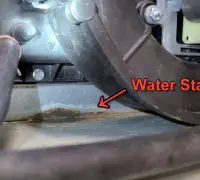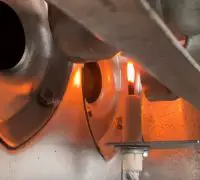Even if we like the snow, one thing we don’t like in the winter is a cold house. Most houses have furnaces as central heating systems as they are reliable and effective. However, most furnaces will develop issues at some point, incredibly when close to their end life. If your furnace tries to start and then shuts down, you can have peace of mind (sort of) knowing that this is a common issue with furnaces.
There are many reasons why a furnace keeps turning on and off, with one of its main parts being dirty or broken. If your furnace starts and stops, the air filters, flame sensor, thermocouple, or thermostat could cause it.
Page Table of Contents
Why your furnace won’t stay running?
Even if you know which parts to check out whenever your furnace can’t stay running, you still need to learn about the fixes. It’s essential to comprehend the role of each component, how they should perform, and how their malfunction can alter the furnace’s performance.
The air filter is dirty
If your furnace ignites and turns off, a dirty air filter is a cause. Air filters are prone to clogging because of dirt and debris collecting in time. When the air filter is clogged, it will block air filtration and affect the furnace’s performance. If your furnace stops quickly, you should check out the air filter.
Clogged filters will obstruct airflow to the heat exchanger and stop the furnace from properly operating. If the airflow is limited, the heat exchanger will overheat. When the furnace lights then go out, it will automatically shut off after several attempts for safety concerns.
Here’s what you should do when this happens:
- Turn off the gas supply to the furnace
- Remove the air filter and check it to make an idea about the damage.
What you do next depends on the type of filter you have on the furnace:
- If the filter is disposable, you need to replace it with a new filter
- If the filter is reusable, you can carefully rinse it with water and remove all dirt and debris.
To avoid this problem in the future, you must follow a regular cleaning schedule. Replacing the furnace filter every three months is an efficient method to minimize the risk of clogging. You can also create a monthly plan and stick to it. Should you live in a region with high pollen exposure, you should check out and clean the air filter twice a month.
The flame sensor is defective
The flame sensor is a crucial safety feature of a gas furnace. Its role is to detect a flame and make the furnace start when the flame is present. If the furnace operates without a fire, the gas will build up and cause explosions. When the rod doesn’t detect a flame, it won’t send voltage to the gas valve and shut down the furnace.
Does your furnace have a flame sensor?
Most furnaces feature a flame sensor, whereas old models may not come with one. Before you conclude a problem with the flame sensor, you need to see where it is. Start by turning off the power to the furnace and closing every gas valve. Unscrew the bolts and screws to remove the furnace access cover. The flame sensor should be right close to the burner assembly. It’s a metal rod attached to the burner at one end.
How do you know that the flame sensor is faulty?
It takes some time until the signs of a defective flame sensor will show. Any of the following signs on the rod or the system indicate that the flame sensor is defective:
- The gas burner stops operating shortly after turning it on
- The sensor’s porcelain end is cracked or broken
- The rod’s end is black
- Soot or debris cover the sensor tip
The steps to take on to clean the flame sensor
Follow this straightforward cleaning guide to manage a dirty or corroded rod:
- Find the flame sensor in the burner assembly
- Use a hex driver to unscrew the nuts that keep the sensor in place
- After you unscrew the nuts, you will observe a connection with the electrical wire to the control box. You also have to disconnect this wire.
- Use an emery cloth to remove solid soot or debris collected on the rod gently
- Thoroughly scrub the rod if you still see layers of soot. Don’t get close to the porcelain area when cleaning.
- Put everything back in its place. Reconnect the wire, put the sensor back in its place, put the screws back, etc.
Replacing the flame sensor
If the rod is broken and the porcelain material is damaged, you will need to consider replacing the flame sensor. Flame sensors vary greatly and have various lengths, shapes, screw mountings, etc. Make sure you get the correct model to replace the damaged flame sensor. Replacing the flame sensor is similar to cleaning it. However, you will return the new flame sensor instead of the old one.
The thermocouple is defective
Old furnaces have a thermocouple and not a flame sensor to shut off the furnace if the pilot flame goes out. If the furnace has a pilot light, it probably has a thermocouple. Checking out the thermocouple is another way to discover why your furnace shuts off after 30 seconds.
Like a flame sensor, the thermocouple can also get covered in soot and debris. If that’s the case with your thermocouple, you should clean it. Should any of its parts be broken, you will need to replace them entirely.
Is it expensive to replace a furnace?
When you hire a certified HVAC technician to replace the thermocouple, expect to pay between $150 and $250 for the job. Should you decide to replace it yourself, you will only pay for the thermocouple, which can be as much as $50.
How to replace the thermocouple?
If you feel confident about your skills, you may try replacing the thermocouple. Don’t hesitate to call the pros if you feel the process gets too complicated for you to complete.
Start by buying the correct parts. The new thermocouple piece has to be compatible with the furnace so check out the user’s manual to see what you need to buy.
- Turn off the electrical power to the furnace
- Use the gas valve to turn off all gas supplies to the furnace
- If your furnace has been running, wait half an hour before opening the access panel
- One of the thermocouple’s ends goes into the opening of the gas valve. Find the point where the thermocouple goes into the assembly bracket.
- Discover the nuts and bolts keeping them in place and unscrew them.
- Connect the new thermocouple to the pilot burner assembly bracket in the same position as the last piece.
- Connect the end fitting of the piece to the control valve and tighten it.
The thermostat is malfunctioning
Sometimes, there’s no problem with the furnace. For instance, the furnace won’t perform as expected if the thermostat is malfunctioning. Here’s what you need to do if you suspect a malfunctioning thermostat:
- Check out the thermostat and see if it’s on. If it is, make sure that the settings are to heat.
- Examine the temperature settings. If the temperature is set lower than the temperature of the surroundings, the furnace will stop operating shortly after turning on.
- When you have a programmable thermostat, see if there are errors in the time or date.
- If the thermostat is in a poor location (close to a heat source, for instance), it will not perform as expected.
When nothing seems wrong with the thermostat, you should make sure that it is running. Begin with adjusting the temperature settings. Pay attention if you notice a small clicking sound—the sound informs that the thermostat has sent the command for heat to the furnace. Also, the furnace should begin to operate immediately after. You must replace the thermostat if there’s no clicking sound and the furnace doesn’t start.
How do you know that the thermostat is faulty?
Inspecting the thermostat to detect any issues is a relatively straightforward job. Additionally, other signs indicate that the thermostat is defective (other than the furnace shutting down after turning one). Here’s what can happen when the thermostat has gone bad:
- The thermostat no longer responds to changes in the settings. It might have difficulties maintaining the settings.
- The temperatures inside the house vary widely, with rooms being scorching and others being icy.
- The thermostat offers inaccurate readings. You can use a thermometer and compare the results of the thermostat.
Final takeaway
You shouldn’t postpone troubleshooting if your furnace stops right after it turns on. If you have no idea where to start, it’s better to call the pros. Even if you pay for the servicing, you will save time, money, and energy, as troubleshooting the furnace should be left to the professionals.
